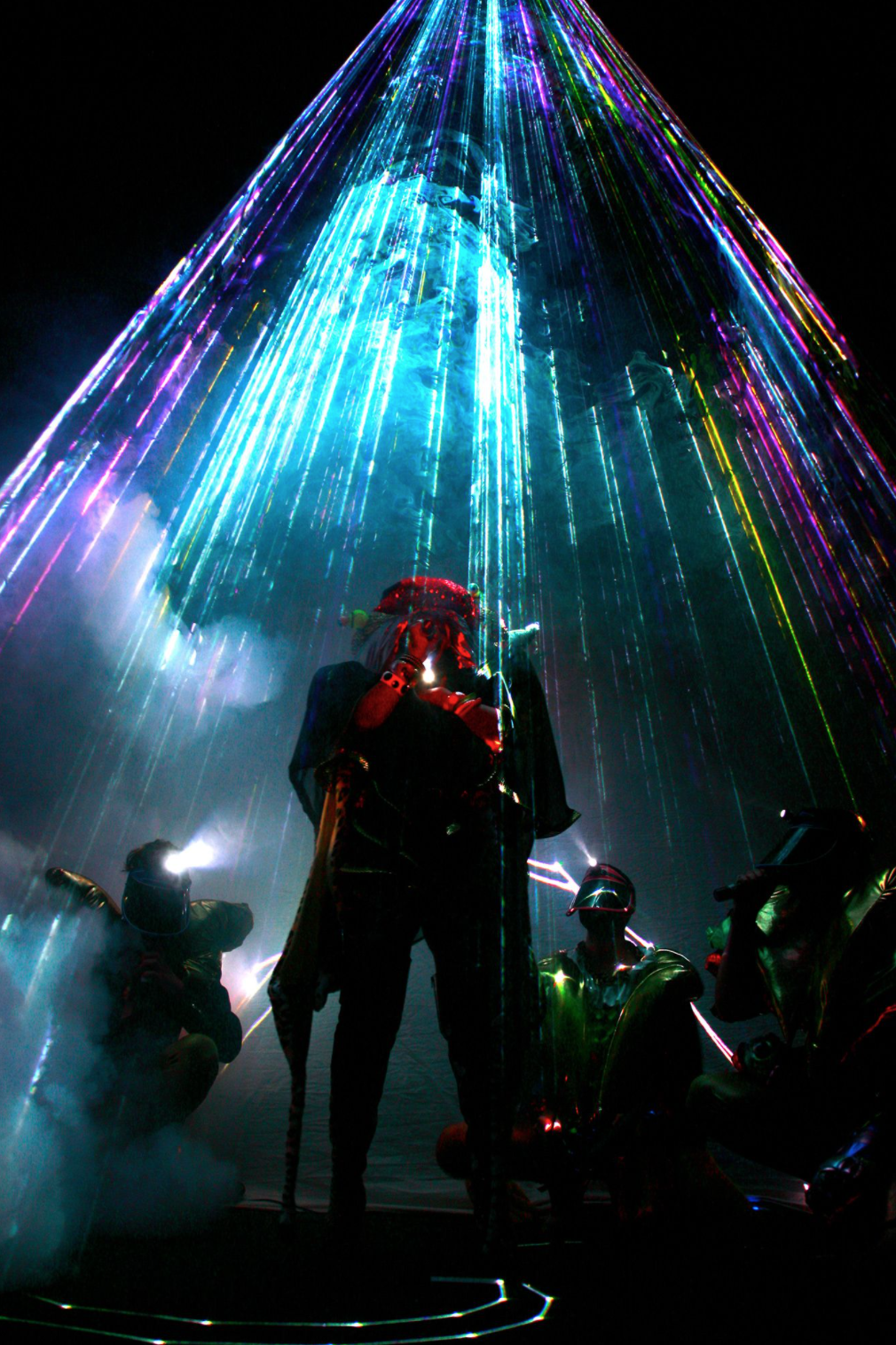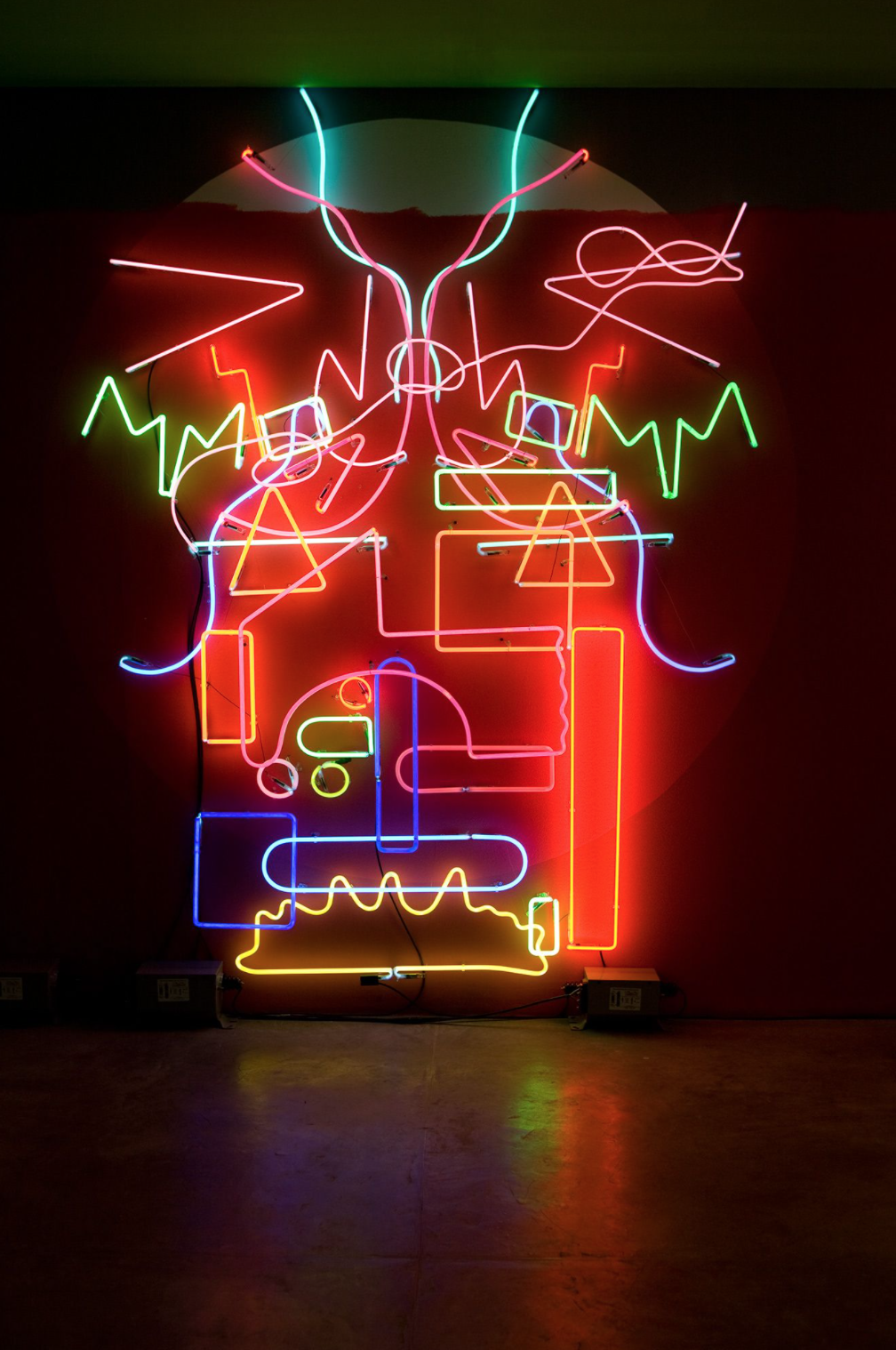ASSUME VIVID ASTRO FOCUS
Text by Michael Bullock
Images courtesy of AVAF
PIN-UP 9, 2011

International art collective Assume Vivid Astro Focus (AVAF) is best known for its raucous, large-scale, multimedia installations, which function very much on an architectural level. It was founded in 2000 by one Brazilian and one French artist, who prefer to be known by their collective moniker only, an attempt to avoid individual authorship and give equal billing to their many collaborators — a flexible, ever-expanding army of artists, musicians, performers, sculptors, muses, transsexuals, and filmmakers, all of whom help make their vision come alive. the spaces they create together challenge art-market boundaries, seamlessly blurring the lines between media — sculpture, performance, video, and architecture. But more importantly, they keep pushing the boundaries between accepted social roles. In each piece, participants are stripped of their given social function, making roles interchangeable, non- existent, or simply unimportant — artist becomes curator, curator becomes artist, collector becomes collaborator, muse becomes graphic designer, critic becomes muse, audience becomes performer...all morphing into an unprecedented social, hierarchical, and material fluidity. the audience is just as important as the live band, which is just as important as the wallpaper, which is just as important as an art-historically significant work brought into the space, and so on. In a sense everything that enters avaf’s realm becomes part of the overall piece, creating a modern hybrid that is less classic installation art and more long-term happening — part community center, part disco, part music venue, and part activist headquarters. At the root of this disregard for the structures of society in general — and of the art world in particular — are avaf’s generous ideas about the future: they are ecstatic about the democratization of technology, and the speedy unrestricted sharing of information, which, in its finest incarnation, is the sharing of knowledge. their built environments embrace this and compete with the volume of stimulation offered in cyberspace, honing in on and paying homage to everything that inspires them. they replace the negative white noise of contemporary pop consumer culture with their own brand of white noise — one that celebrates the interconnected web of human creative output. For those who’ve never had a chance to experience their special blend of spatiality firsthand, a retrospective book on their first decade of work has now been published by Rizzoli, with all the group’s projects featured in one succinct volume, titled simply avaf. A visual assault and complete sensory overload, this ultimate fanzine features deliberately over- stimulating visuals that perfectly translate the collective’s multilayered three-dimensional environments onto paper.


